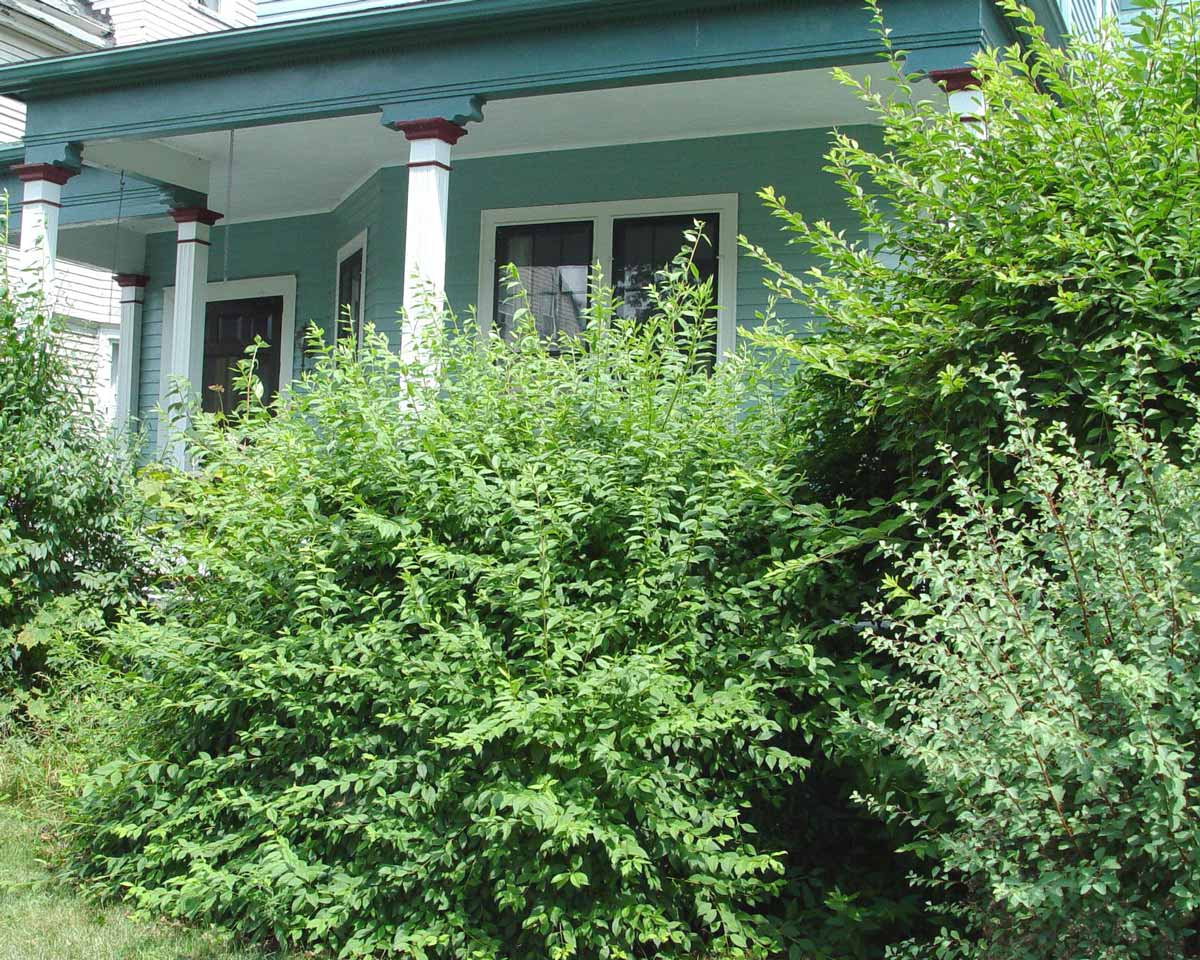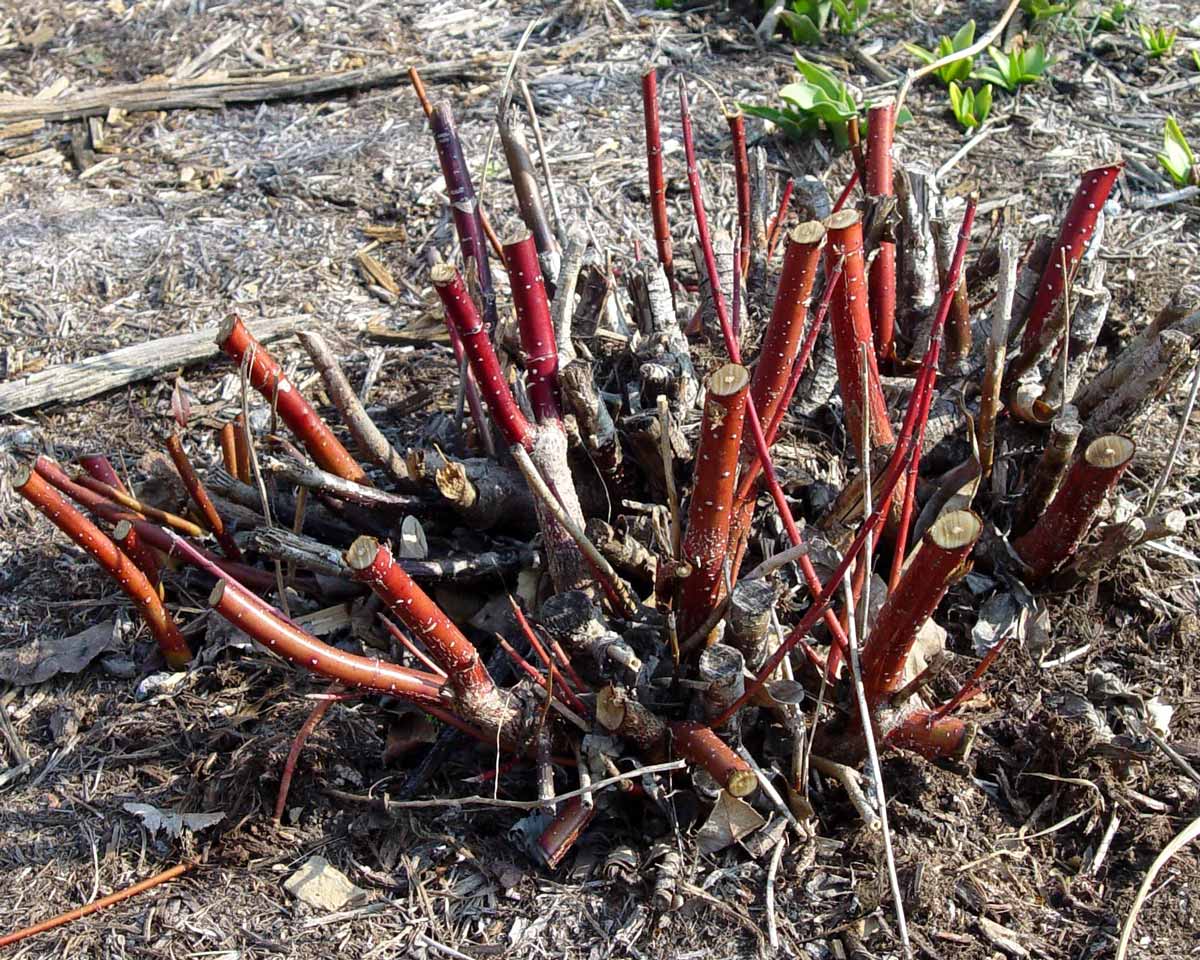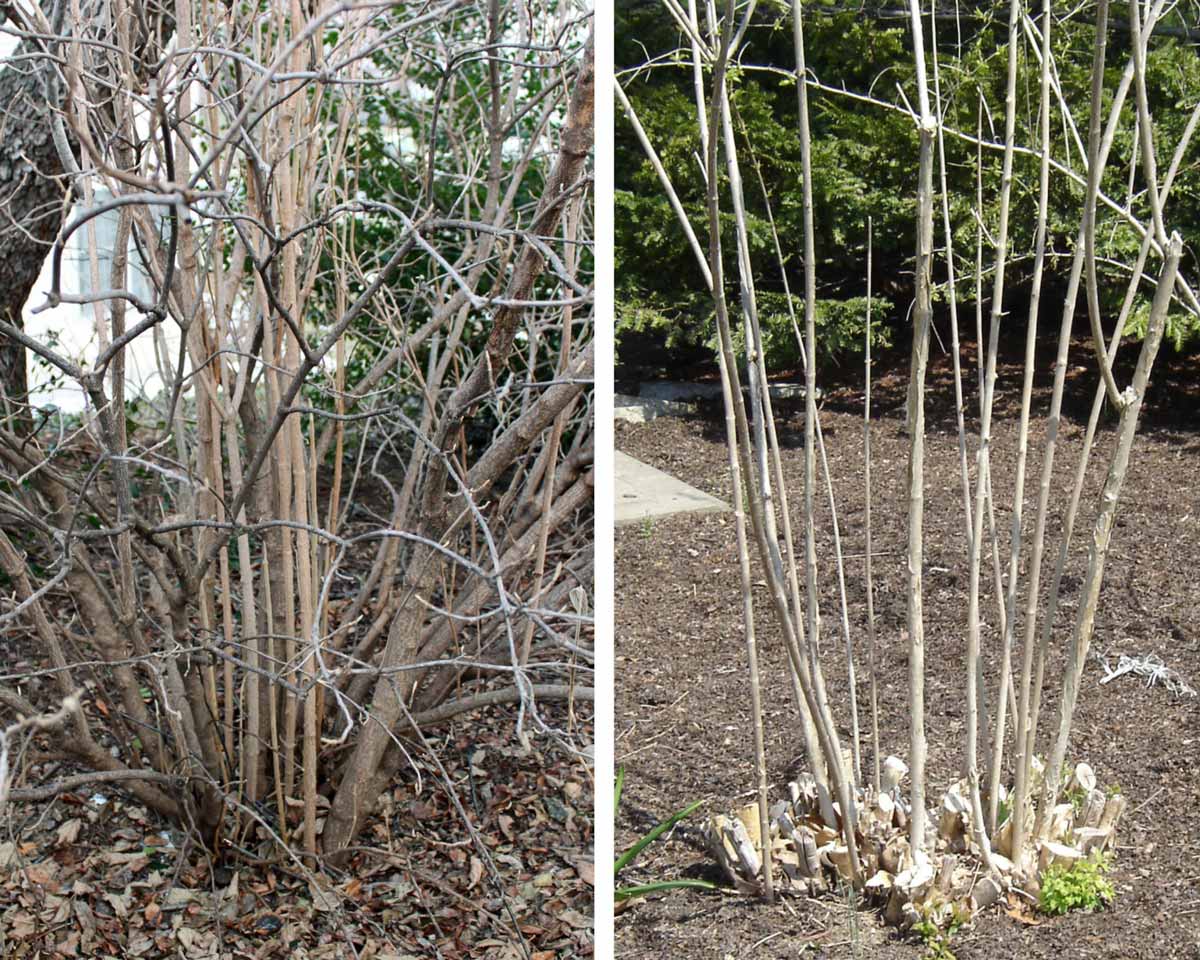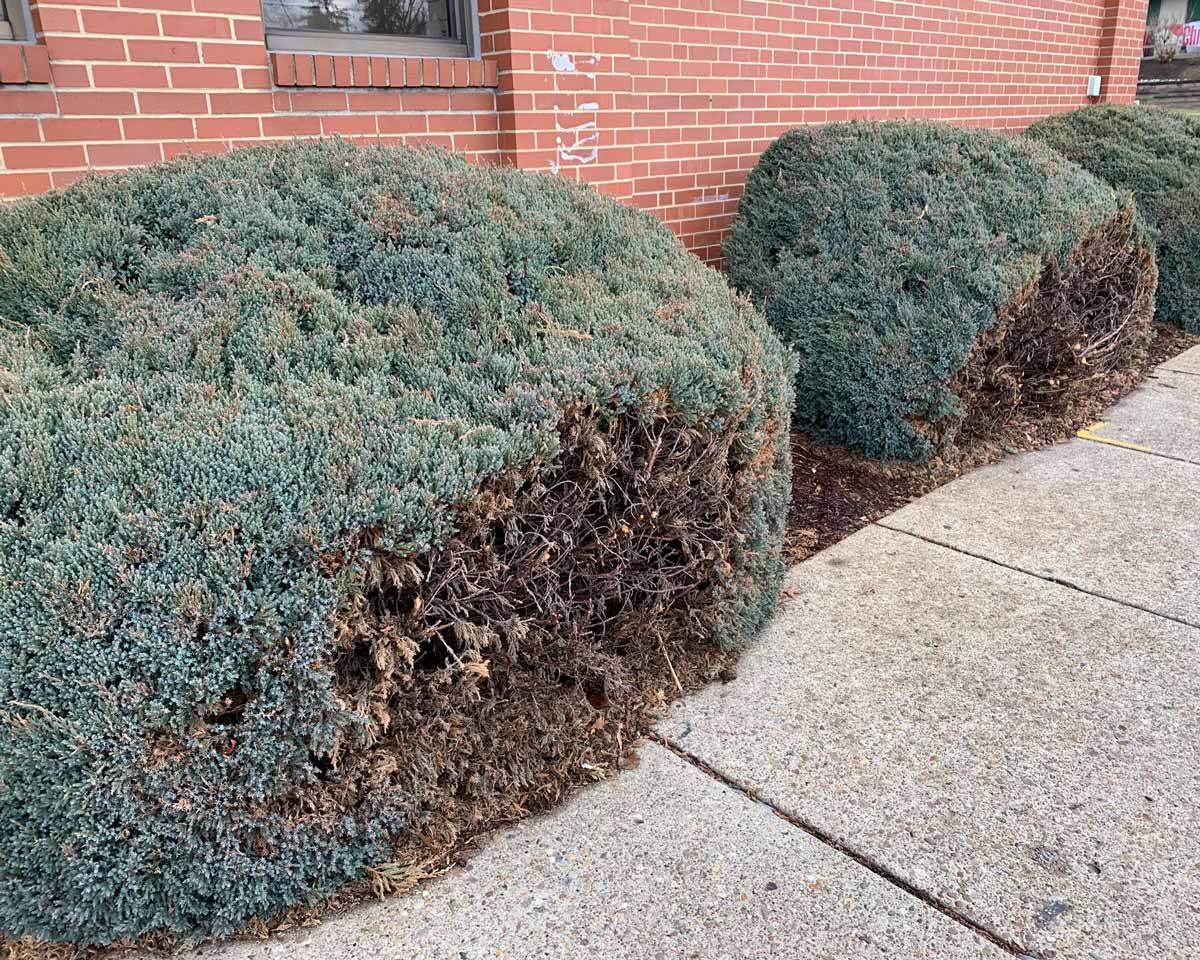The Best Compact Shrubs for Front-Yard Gardens
These dwarf varieties of favorite evergreen and flowering shrubs are perfect for beautiful, low-maintenance curb appeal.
So you’re looking at a big, old bush and wondering if this is the year you ought to remove the monstrosity.
Sometimes that is the best option, but other times, it’s possible to save work and money by pruning an aging, overgrown shrub back into suitable size – and maybe better health as well.
Getting rid of old wood stimulates many plants to grow replacement wood that’s more vigorous, better blooming, and sometimes more resistant to disease.
Two types of seemingly drastic pruning will get the job done:
1.) Rejuvenation pruning or “coppicing,” which involves whacking whole plants nearly to the ground in one fell swoop.
2.) Renewal pruning, which is a gradual three-year process.

These overgrown bushes may be salvageable with some heavy pruning instead of yanking them. Photo by George Wiegel
Which pruning option you pick will depend on the type of plant, your goal, and to a degree, your confidence level.
Before cutting anything, it’s important to know what plant you’re about to tackle. Different plants respond differently to heavy pruning.
A red-twig dogwood shrub, for example, produces its best red branches when all growth is cut nearly to the ground each spring, while if you did that to, say, an overgrown evergreen juniper or redbud tree, you’d kill it.
With any plant, though, one thing you can do for starters is cut out any dead wood. Dead wood is not coming back to life, so clearing it first will show you what’s left to work with.
How to tell if the wood is dead and not just dormant? Dead wood is usually gray instead of brown, it’s brown instead of green underneath when you peel away a little bark, and it snaps instead of bends under light pressure.

This red-twig dogwood has been “coppiced.” All branches have been cut to about six inches. Photo by George Weigel
Some of the best candidates for the radical, whole-plant rejuvenation/coppicing method are fast-growers capable of growing new shoots of three feet or more in a single season.
These include forsythia, smokebush, panicle and smooth hydrangeas, ninebark, butterfly bush, sweetspire, beautyberry, beautybush, elderberry, vitex, caryopteris, the aforementioned red-twig dogwoods, weigela, deutzia, New Jersey tea, diervilla, staghorn sumac, quince, sorbaria, and most willows, spireas, and honeysuckles.
Coppicing involves cutting whole plants down to about four to six inches at the end of winter – ideally right before new growth begins.
That timing 1.) takes advantage of the plant’s prime growing season, 2.) avoids wasting energy on new growth that you’re only going to cut off later, and 3.) is cleaner and easier when the plants are leafless.
Watering, fertilizing, and topping the ground with an inch of compost after coppicing is helpful for persuading a plant to bounce back from beheading.
The drawback of end-of-winter whackbacks is that you’ll sacrifice that year’s flowers on shrubs that bloom in spring (forsythia, smokebush, and beautybush, for example). But for summer bloomers (panicle hydrangea, butterfly bush, sweetspire, etc.), those produce flower buds on wood grown that season and usually will bloom later in the same season.
If you don’t want to risk the possibility of a non-comeback in the aftermath of a coppicing – or if that degree of cutting just makes you too nervous – go with the second option, which is renewal pruning.

Notice the different size and age of the shoots in the shrub at left. The biggest, oldest ones are candidates for renewal pruning. At right, one- and two-year-old shoots are left to grow in year three of this renewal pruning. Stubs of the earlier removals can be seen at the base. Photo by George Weigel
Renewal pruning involves removing one-third of the biggest, oldest shoots to the ground, then shortening the remaining branches, if needed, by about one-third each.
Do the same thing the following end of winter (removing the next oldest third), then finally eliminate the third oldest set of shoots at the end of the third winter.
As new shoots emerge, allow enough to grow to replace the ones you’re cutting off. The result is that by year four, you’ll have a whole new bush.
If you stick with the one-third removal/one-third replacement game plan while also keeping branches cut back to desired lengths each year, it’s possible to maintain a blooming, good-looking, right-sized shrub for decades.
That strategy overcomes what likely got you into the monstrosity situation in the first place – ignoring regular maintenance for years instead of light, annual size controls.
Renewal pruning is especially good for tackling an overgrown lilac – a species that often stops blooming altogether when it’s old and overgrown.
It’s also a good option for mock orange, rose-of-sharon, viburnum, winterberry holly, and any of the above species that respond to coppicing.

Heavy pruning doesn’t work for most overgrown evergreens. Notice the dead spots in these junipers where the branches were cut back too far. Photo by George Weigel
Don’t try either of these options with most overgrown evergreens. Only a few species of those can tolerate severe pruning, such as boxwoods, yews, hollies, and privets.
Most needled evergreens won’t regrow if you cut them back into bare, inner wood. Those branches will just die. This includes common evergreens such as pines, firs, spruces, arborvitae, and junipers.
Once those get overgrown, you are likely looking at removal.